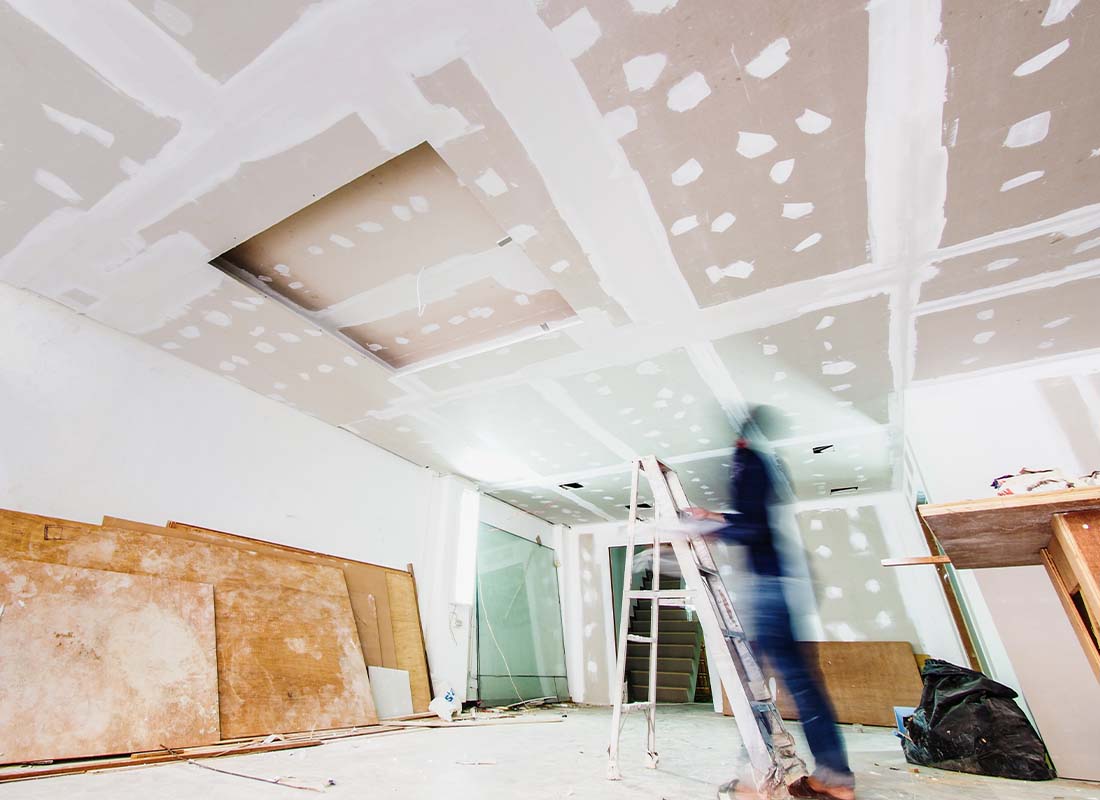Drywall Setup Made Easy: Tips for Perfect Results
Drywall installation is usually viewed as a difficult task, yet with the ideal approach and understanding, it can become a workable undertaking. Grasping techniques for cutting, hanging, and ending up drywall can considerably influence the outcome.
Selecting the Right Products
Selecting the ideal materials for drywall setup is crucial to accomplishing a sturdy and aesthetically pleasing surface. drywall contractor. The key part, drywall sheets, usually can be found in numerous thicknesses, with 1/2-inch sheets being conventional for indoor walls. For areas needing added dampness resistance, such as restrooms or kitchen areas, think about utilizing eco-friendly board or concrete board, which are particularly made to withstand humidity

Additionally, picking the appropriate bolts-- either nails or screws-- is necessary for protecting the drywall to the framework. Drywall screws are generally favored for their holding power and reduced threat of standing out. Consider the finishing touches such as guide and paint, which not just enhance the appearance yet likewise secure the drywall from wetness and wear.
Preparing the Setup Area
Prior to beginning the drywall installation procedure, it is crucial to prepare the installment area completely. This prep work includes several essential actions to guarantee a smooth and successful project. Clear the area of any kind of furniture, devices, or obstructions that can hinder accessibility. A clean work space lessens the risk of damages to existing items and permits effective movement during installation.
Next, check the wall surfaces and ceiling for any kind of imperfections, such as cracks, openings, or mold and mildew. Address these issues in advance; spot any problems and permit sufficient time for repair services to completely dry. Additionally, guarantee that electric outlets, switches, and plumbing are appropriately placed and accounted for, as this will affect drywall positioning.
Consider the environmental conditions. A stable temperature and humidity level are important for ideal bond and performance of the drywall materials. If required, use a dehumidifier or heater to create suitable conditions.
Cutting and Hanging Drywall
The secret to efficient drywall installment exists in the accurate cutting and dangling of the panels. Make use of a straight edge and an energy blade to score the drywall along your dimensions, then snap it along the racked up line for a clean break.

Always function from the top down and entrusted to right, guaranteeing that you keep a staggered pattern to enhance security. Effectively hanging the drywall sets the structure for a smooth surface, ultimately resulting in remarkable results in your drywall task.
Taping and Mudding Methods
While correct cutting and hanging of drywall sets the phase, the following important action entails mastering taping you could try here and mudding methods to make certain a seamless surface. Insulation is crucial for reinforcing joints and stopping splits; it entails embedding tape into the applied joint compound (mud) Begin with a top quality fiberglass or paper tape, using the tape over the joint and pushing it into the wet mud using a taping knife, making sure no air bubbles continue to be.
As soon as the tape remains in area, use a slim layer of joint substance over the tape, feathering the edges to create a smooth transition to the drywall surface. Allow this layer to dry completely before sanding it lightly to remove imperfections. Repeat this process, applying additional coats of mud as necessary-- generally two to three coats-- while gradually widening the application area with each layer to achieve a smooth appearance.
After the last layer dries, sand the surface with a fine-grit sandpaper until smooth. drywall repair. Keep in mind to use a mask during sanding to avoid breathing in dust fragments. Understanding these taping and mudding strategies is essential for attaining a professional-quality surface in your drywall setup
Completing Touches for Perfection
Attaining a remarkable drywall setup surpasses taping and mudding; it finishes in the ending up touches that raise the overall look. These last steps read the article are crucial in ensuring a professional-grade coating that improves the aesthetic appeals of your space.
Begin by sanding the dried out joint compound to develop a smooth surface. drywall contractor. After sanding, clean down the walls with a wet cloth to eliminate any dust particles, guaranteeing a tidy surface area for paint.
Following, apply a primer particularly designed for drywall. This action is essential, as it helps secure the joint substance and gives a consistent base for the overcoat. As soon as the primer dries, evaluate for any blemishes, and touch up as needed.
Final Thought
In conclusion, effective drywall installation rests on the mindful selection of materials, detailed preparation of the setup location, and specific execution of cutting and hanging strategies. Proficiency of taping and mudding processes is vital for attaining a smooth coating. Additionally, attention to completing touches, consisting of priming and touch-ups, ensures a professional-grade result. By adhering to these standards, the high quality of handiwork can be significantly enhanced, contributing to the general visual and capability of the room.
Drywall setup is commonly perceived as a difficult task, yet with the best method and understanding, it can become a manageable endeavor.Picking the ideal products for drywall setup is vital to accomplishing a resilient and visually pleasing surface.Before beginning the drywall installment procedure, it is vital to prepare the installation area extensively. Grasping these taping and mudding methods is important for accomplishing a professional-quality finish in your drywall installment.
In final thought, successful drywall installment pivots on the careful option of materials, thorough prep work of the setup location, and accurate execution of reducing and hanging techniques.
 Anthony Michael Hall Then & Now!
Anthony Michael Hall Then & Now! Ashley Johnson Then & Now!
Ashley Johnson Then & Now! Mackenzie Rosman Then & Now!
Mackenzie Rosman Then & Now! Jaclyn Smith Then & Now!
Jaclyn Smith Then & Now! Kerri Strug Then & Now!
Kerri Strug Then & Now!